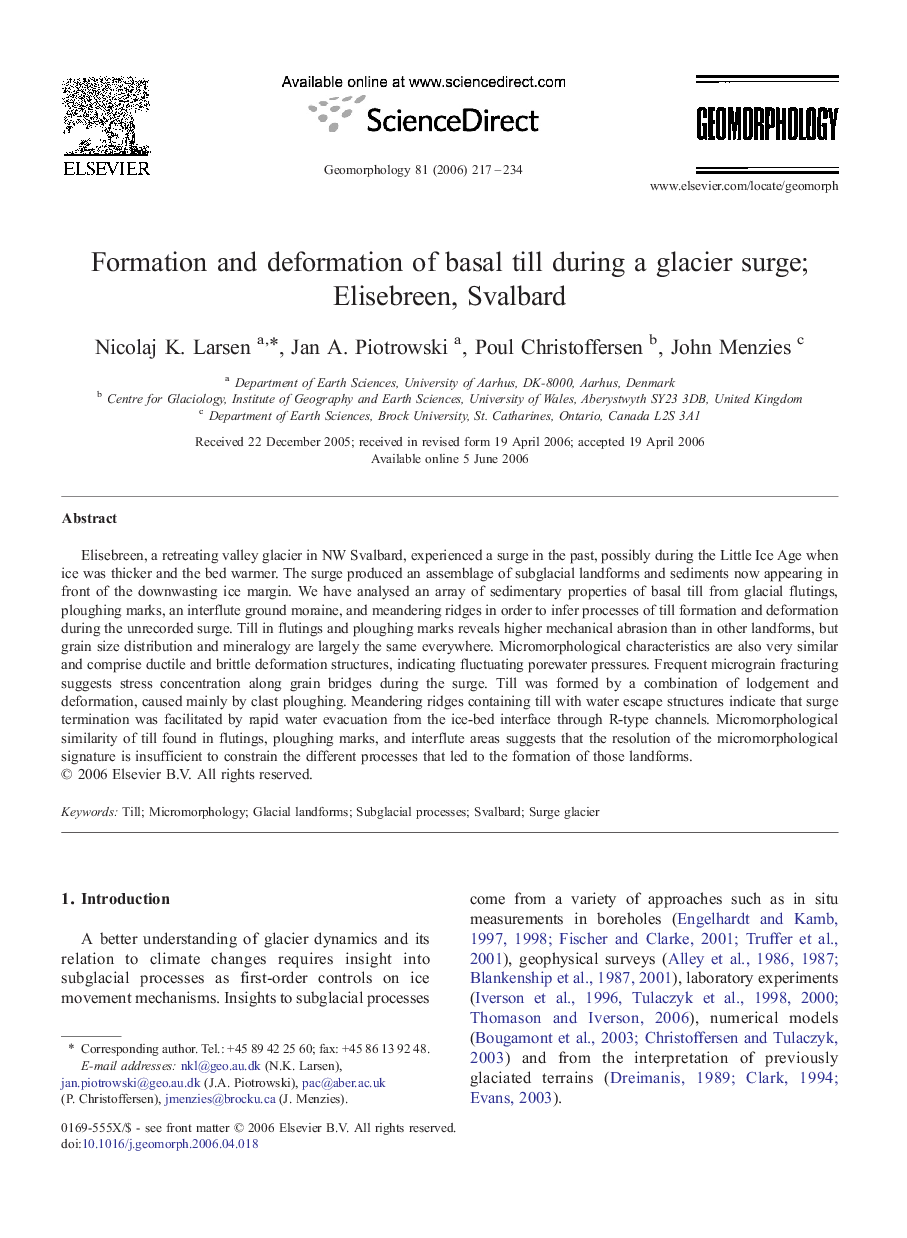| Article ID | Journal | Published Year | Pages | File Type |
|---|---|---|---|---|
| 4687471 | Geomorphology | 2006 | 18 Pages |
Abstract
Elisebreen, a retreating valley glacier in NW Svalbard, experienced a surge in the past, possibly during the Little Ice Age when ice was thicker and the bed warmer. The surge produced an assemblage of subglacial landforms and sediments now appearing in front of the downwasting ice margin. We have analysed an array of sedimentary properties of basal till from glacial flutings, ploughing marks, an interflute ground moraine, and meandering ridges in order to infer processes of till formation and deformation during the unrecorded surge. Till in flutings and ploughing marks reveals higher mechanical abrasion than in other landforms, but grain size distribution and mineralogy are largely the same everywhere. Micromorphological characteristics are also very similar and comprise ductile and brittle deformation structures, indicating fluctuating porewater pressures. Frequent micrograin fracturing suggests stress concentration along grain bridges during the surge. Till was formed by a combination of lodgement and deformation, caused mainly by clast ploughing. Meandering ridges containing till with water escape structures indicate that surge termination was facilitated by rapid water evacuation from the ice-bed interface through R-type channels. Micromorphological similarity of till found in flutings, ploughing marks, and interflute areas suggests that the resolution of the micromorphological signature is insufficient to constrain the different processes that led to the formation of those landforms.
Related Topics
Physical Sciences and Engineering
Earth and Planetary Sciences
Earth-Surface Processes
Authors
Nicolaj K. Larsen, Jan A. Piotrowski, Poul Christoffersen, John Menzies,
